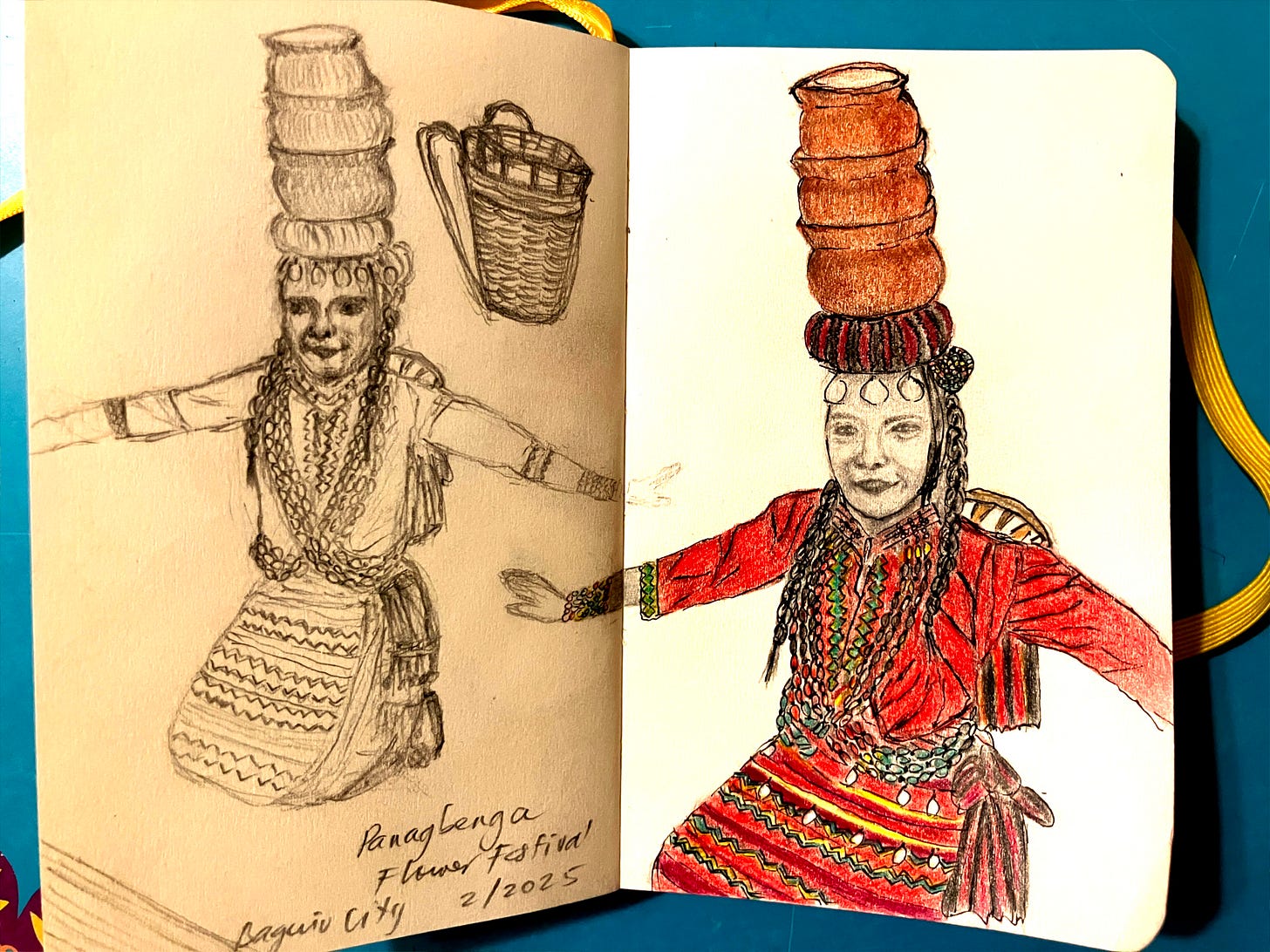
I left the Philippines before the Panagbenga (Kankanaey word for season of blooming) came to be. This month-long celebration started in 1996, and was originally called the Baguio Flower Festival. In its infancy, a friend mailed me pictures taken from her vantage point in the Lopez Building at the corner of Assumption and Session Roads. Later, as technology progressed, she emailed me images. Now, I view the cultural dances online and admire the floats bedecked with the city’s abundant flowers. One photo of a girl kneeling and balancing pots on her head piqued my interest. The finery of her garb was exquisite, but what struck me most was how I knew the exact spot by the slant in the road.
Panagbenga recently concluded, and the joy it brought lingered and left me reminiscing about my beloved city.
As far as I could remember, there were parades down Session Road, the main artery of my hometown. If you stood at one spot, someone you knew would pass by within a minute. These chance meetings ended in long conversations and flowed like the city’s lifeblood.
In my youth, we watched or participated in parades during Baguio Day (September 1st) and University Days. In the photograph below, Mama represents the College of Commerce. The parades ended at the Melvin Jones grounds across Burnham Park Lake.

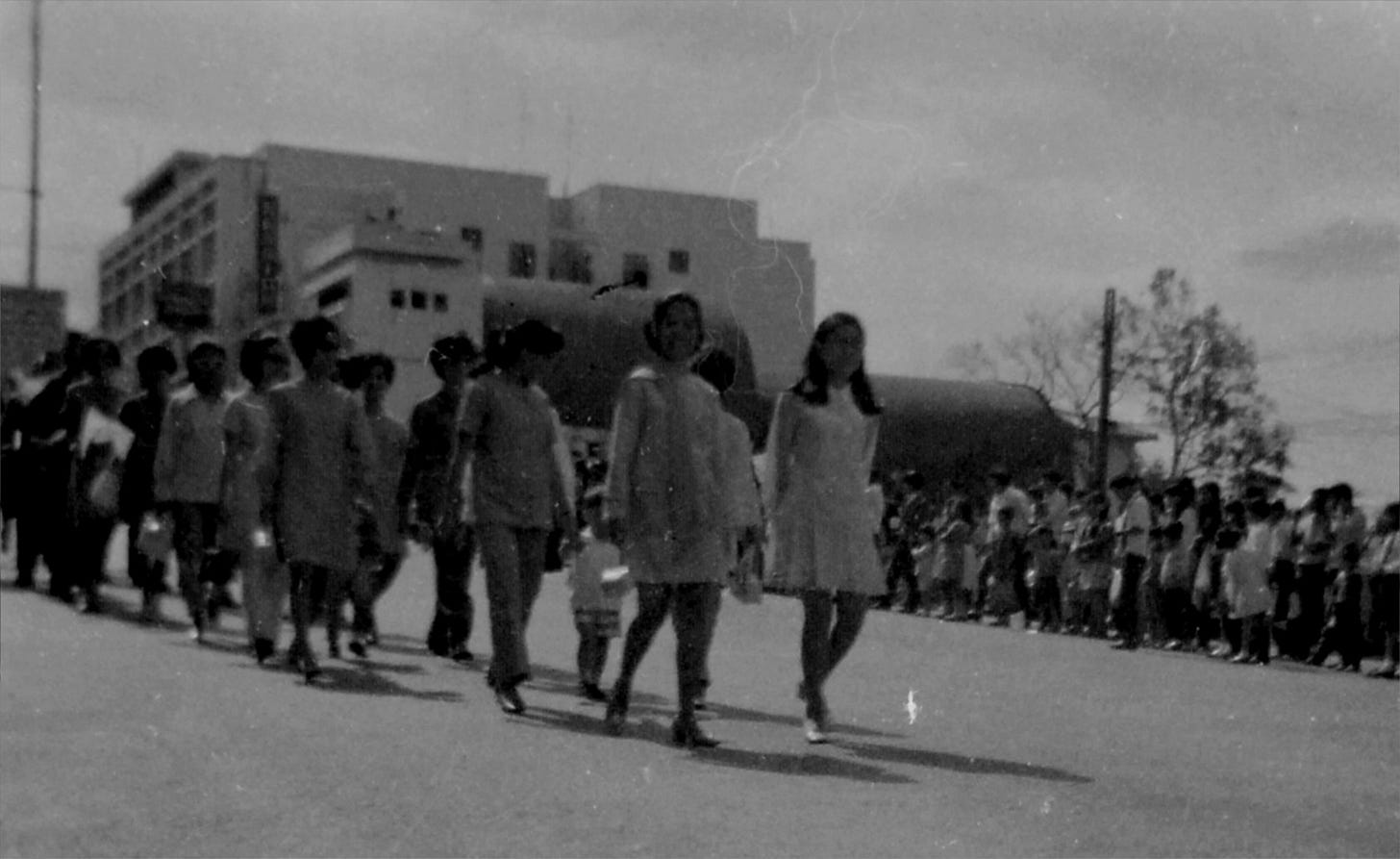
In this next photograph, my siblings participated, but I was too young, not yet enrolled at Saint Louis University Elementary Laboratory, or the Big School, as I called it. From my forced smile, you could tell I was annoyed at not having curled green crepe paper on my vest, like my older siblings. I was always the saling pusa, a stray kitten catching up with the herd.
In sixth grade, we lined up at the top of Session Road and my teacher plucked me to guide our delegation. “I don’t know how,” I protested.
My teacher said, “It’s easy, just follow the drum beat, and say, ‘Left, left, left-right-left.”
Many years later, that’s how I commanded my troops when I was in ROTC. It seems like a lifetime ago, but yes, that is me in full military regalia. I took Citizens Army Training (CAT) in high school, on Tuesdays and Thursdays. We marched on the grounds or assembled and disassembled an M1 Garand. The next hour, we sat in Home Economics class like Little Women, minding our teacher’s scrutiny in embroidering even stitches for our sampler.
I chose Citizen’s Military Training in college because it exempted me from Physical Education. I had seen my older sisters at the Burgos Gym in shorts, dancing and exercising. Nope, that wasn’t me.
Little did I know the rigors of ROTC, which I survived. We bivouacked near the Hundred Islands in Pangasinan, where I learned to crawl on my belly under barbed wires. I hated the early morning runs but loved camping in the mountains of Baguio. By my second year in college, I had become active in the student paper, and my eyes opened to another world.
The tradition of parades continues in college. Below, I am with my Med Tech Class. Participation was mandatory. I wanted to join another delegation, the League of Filipino Students. I joined my academic class to earn points for attendance, but in protest, I did not wear my uniform, opting for a token sweatshirt and a tubao around my neck.
During the Marcos regime, activists wore the tubao in different ways: as headbands to fix their hair, as covering for the eyes whenever authorities sprayed tear gas during rallies, and as covering for their faces to hide their identities, hoping to avoid being picked up by the military. Some also used the tubao as a scarf wrapped around their necks.
If it’s not the tubao, it’s a red, white, or yellow bandanna that activists wore to rallies.
MAC MACAPENDEG, GMA News, September 21, 2012 4:18pm
In my later college years, I joined protests against the US Military Bases and other issues close to my heart. I have no pictures from that time, but the memory is seared in my mind.
Grand Cañao and other Indigenous Celebrations
Growing up in Baguio, the sound of the gongs was as familiar as the perpetual rain and the Cathedral bells tolling the Angelus. We lived on Ibaloi land, and the culture of the other tribes permeated our everyday lives.
I vaguely recall the Grand Cañao (pronounced kan-yaw) parade. I was ten years old, standing at Mercury Drug at the bottom of Session Road. The parade stopped to recreate a fight between two indigenous tribesmen. One man leaped in the air with a spear. I gasped, thinking it would pierce his opponent’s heart as he landed. It was just for show, but I was shaken.
The Grand Cañao was a one-time event. From what I recall, there was a huge uproar about the commercialization of the Igorot culture. Research revealed the painful process of organizing the event.
Baguio City is famous for its mountains, pine trees, and strawberries. Now, the Panagbenga draws many tourists from all over the world. As with the earlier challenges with the Grand Cañao, the city must balance tourism revenue needs with respect for and preservation of indigenous culture.
From across the sea, I watch Panagbenga, the SLU Lantern Parade, and other forms of pageantry and performance down Session Road. They connect me to my hometown as if I had never left.
Recommended Reading:
Martial Law fashion: The Imeldific and the Third World look
Panagbenga: Baguio Flower Festival
The Ibaloy Heritage Garden: A Lifeline for Indigenous Culture and Values in Baguio City
Producing Spectacles, Appropriating Traditions: The Case of Baguio’s Panagbenga Festival
Panagbenga Sucks: Everything Wrong with the Baguio Flower Festival




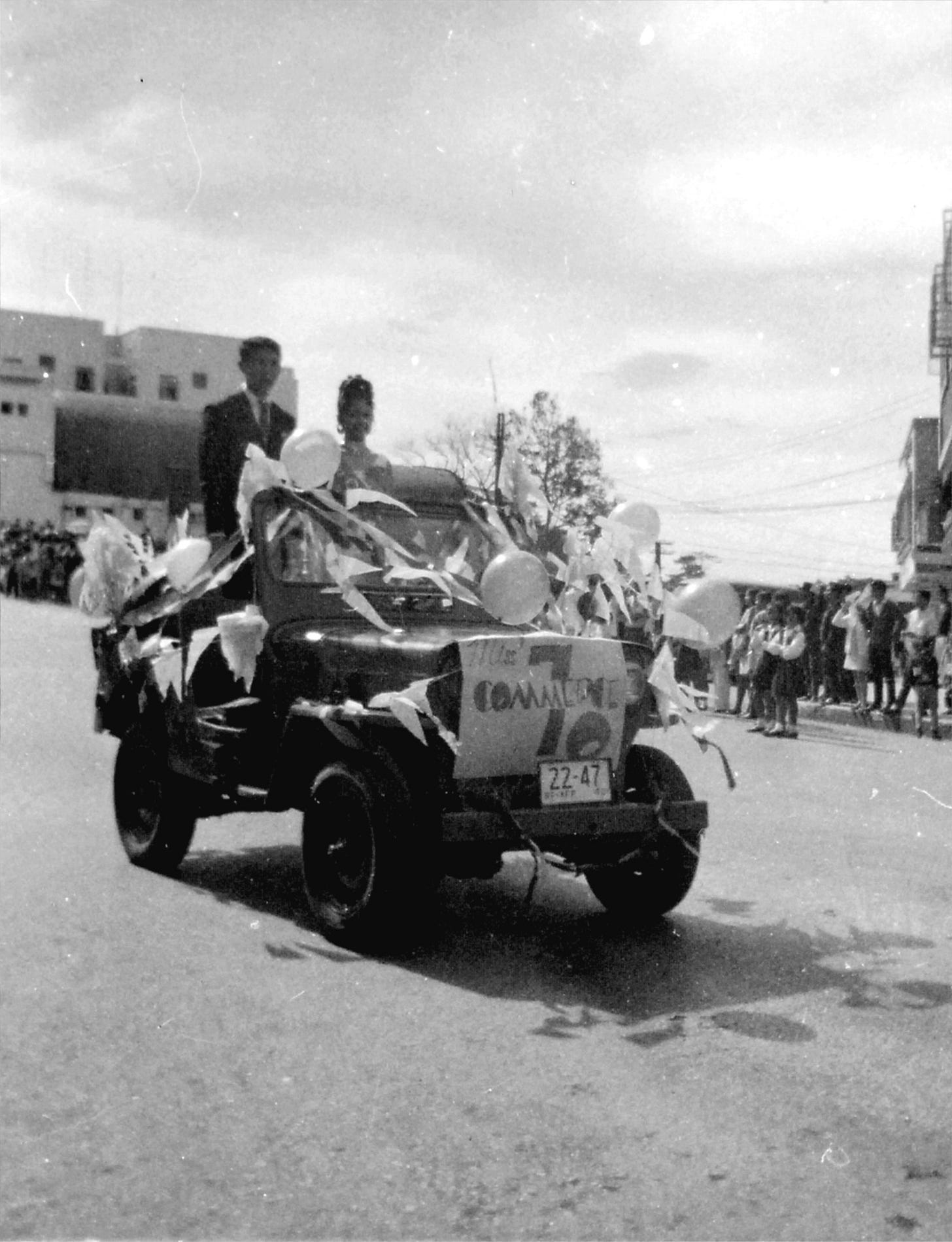

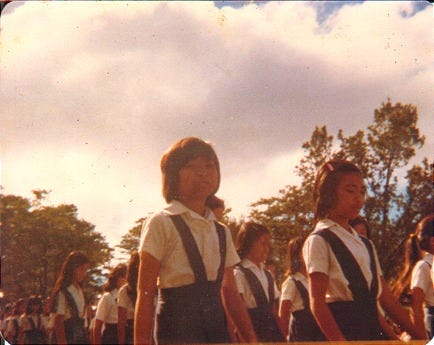
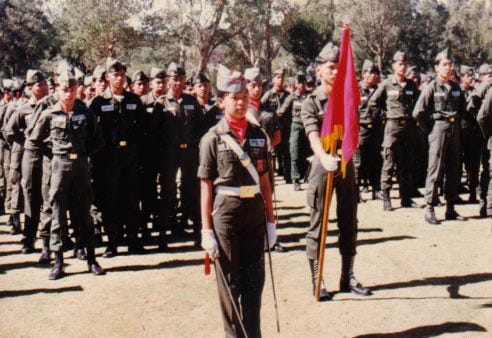


Wow, this was super interesting to read! Hopefully you write more about your experience growing up in Baguio and also how you interacted with the native Ibaloi and other Igorot peoples, that would be an interesting topic.
Taga-Bukidnon kami, at tsaka may kwentuhan nila sa fiesta na may mga IP, tapos may laruan nila noong 1960s-1970s na isusuot nila ang native clothing. Kaya isip ko, may similarities sa pamilya natin, kasi Bisaya kami pero so neighbors natin, IP sila. Nagtataka ko kung bisita mo sa Banaue noong panahon, at kung mahirap na binisita doon.
Wow. So interesting to read about your school experiences -- so different from mine in the U.S. Much more community involvement in the Philippines. Nice illustration, too!